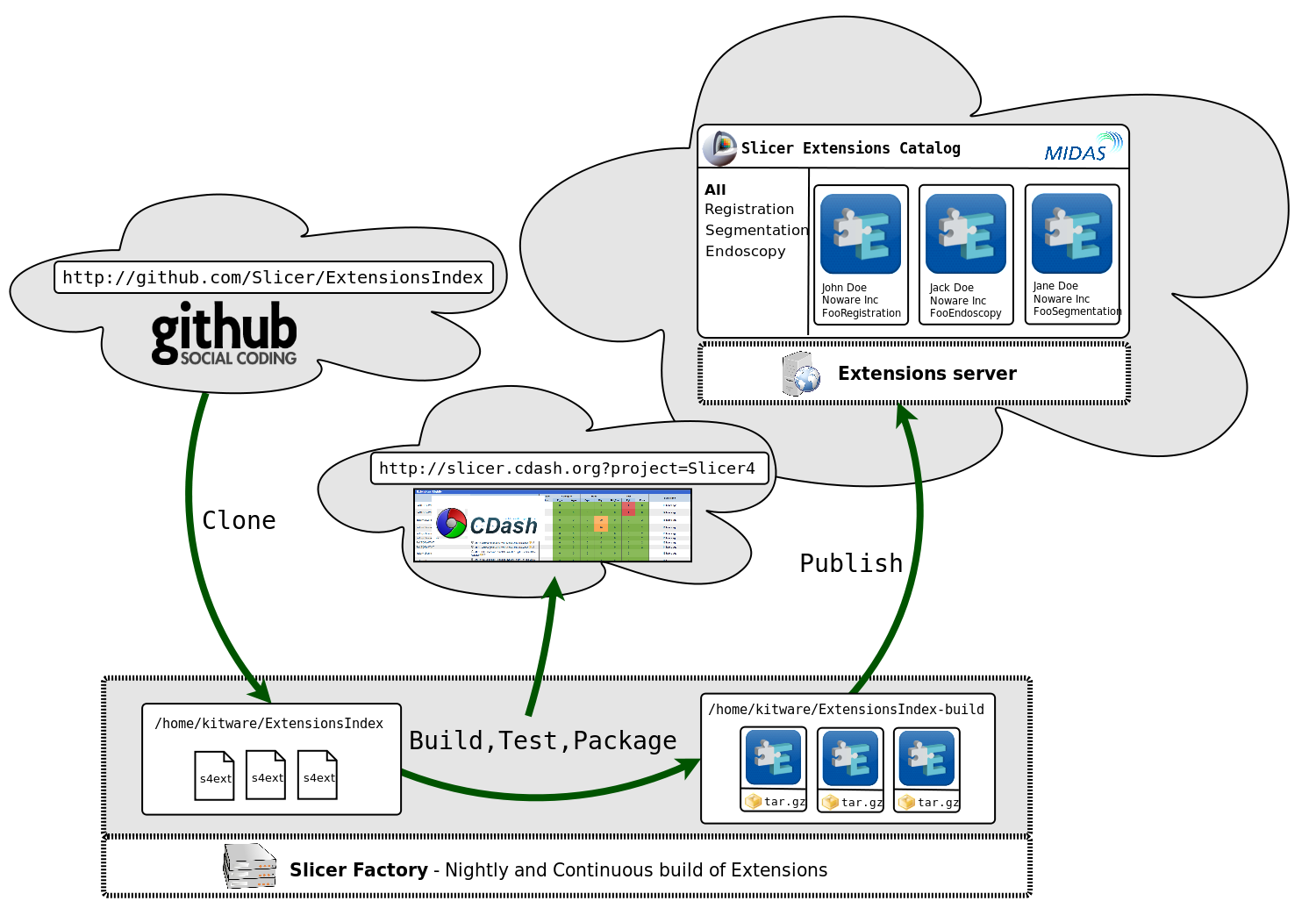Think of the ExtensionsIndex as a repository containing a list of extension description files (*.s4ext) used by the Slicer extensions build system to build, test, package and upload extensions on an extensions server.
Once uploaded on an extensions server, within Slicer, extensions can be installed using the extensions manager.
A website referred to as the extensions catalog provides Slicer users with a convenient way of finding and downloading extensions previously uploaded on the extensions server. The extensions manager in Slicer makes the catalog available directly in the application and allows extensions to be installed, updated, or uninstalled by a few clicks.
The following diagram depicts how extensions catalog, extensions server, CDash and the
slicer factory interact.
We accept extensions to 3D Slicer at various quality and maturity levels. To make it clear for users what they can expect from a particular extension, 3D Slicer maintainers assign each extension to a "tier":
- Tier 1: Experimental extensions.
- Tier 3: Community-supported extensions.
- Tier 5: Critically important extensions, supported by Slicer core developers.
Extension tier 2 and 4 are reserved for future use, to allow defining intermediate steps between the initially defined tiers without reclassifying every extension.
See https://slicer.readthedocs.io/en/latest/developer_guide/extensions.html#extensions-build-system
Questions regarding this project should be posted on 3D Slicer forum: https://discourse.slicer.org
